Attrezzature per la produzione di birra industriale si riferisce ai sistemi e ai macchinari su larga scala utilizzati per produrre birra e altre bevande fermentate in quantità commerciali. Con la crescente popolarità delle birre artigianali e dei microbirrifici, c’è una crescente domanda di tecnologie avanzate di produzione della birra per migliorare l’efficienza, la qualità e la produzione. Questa guida fornisce ai produttori di birra tutto ciò che devono sapere sulla scelta e sul funzionamento dell'hardware per la produzione di birra su scala industriale.
Panoramica dei sistemi di produzione della birra industriale
Le attrezzature per la produzione di birra industriale sono disponibili in varie configurazioni, da quelle integrate a quelle modulari, per soddisfare birrifici con diverse esigenze di produzione. I componenti chiave includono il birrificio per convertire l'amido in alcol, recipienti di fermentazione e invecchiamento, sistemi di filtraggio, linee di confezionamento, impianti di pulizia, ecc. I moderni birrifici industriali sfruttano l'automazione nei processi di produzione per un controllo di precisione.
Quando si seleziona l'attrezzatura, i fattori chiave da considerare sono:
Tabella 1: Considerazioni chiave per la selezione delle attrezzature per birrifici industriali
| Parametri | Dettagli |
|---|---|
| Volume di produzione | Dimensione del lotto, capacità di produzione annuale |
| Varietà di prodotti | Numero e stili di birre prodotte |
| Dimensione fisica | Ingombro e vincoli del sito |
| Bilancio | Costi delle attrezzature e investimenti aggiuntivi |
| Personalizzazione del processo | Flessibilità per stili artigianali e sperimentazione |
| Controllo qualità | Sistemi di monitoraggio e capacità di automazione |
| Sostenibilità | Consumo di acqua ed energia; produzione più pulita |
| Livello di abilità del personale | Requisiti di funzionamento e manutenzione delle apparecchiature |
Attrezzature per la produzione di birra industriale Guida
Le configurazioni di produzione della birra industriale comprendono complessi sistemi interconnessi che soddisfano diverse funzioni nel flusso di lavoro di produzione della birra.
Tabella 2: Principali tipi di attrezzature per la produzione di birra industriale
| Categoria dell'attrezzatura | Funzioni chiave e macchinari |
|---|---|
| Fresatura | Mulini a martelli e a rulli per frantumare il malto |
| Conversione del mosto | Filtri di ammostamento, tini di filtraggio, bollitori di ammostamento per estrarre gli zuccheri |
| Bollitura del mosto | Bollitori in rame per bollire il mosto e le aggiunte di luppolo |
| Whirlpool | Recipienti che utilizzano la forza centrifuga per separare il trub |
| Raffreddamento | Scambiatori di calore a piastre, refrigeratori di mosto |
| Fermentazione | Serbatoi aperti, chiusi, fermentatori conici con controllo della temperatura |
| Maturazione | Separazione dei lieviti, chiarifica, vasche di invecchiamento |
| Carbonazione | Vasche Brite, pietre di carbonatazione |
| Filtrazione | Filtri a piastre, centrifughe, separatori |
| Imballaggio | Linee di inscatolamento, riempitrici di bottiglie, infustamento |
| Sistemi CIP | Stazioni clean-in-place, prodotti chimici per la pulizia |
| Automazione | PLC, HMI, sensori per l'acquisizione e il controllo dei dati |
I moderni birrifici commerciali utilizzano progetti modulari che consentono di personalizzare le attrezzature per soddisfare esigenze specifiche in termini di volumi di lotti, numero di marchi prodotti, formati di imballaggio richiesti, ecc.
Capacità, dimensioni, layout
La capacità produttiva, la superficie, la planimetria e il layout sono aspetti critici che influenzano la scelta delle attrezzature per i birrifici industriali.
Tabella 3: Capacità delle apparecchiature e parametri fisici
| Considerazioni | Dettagli | Raccomandazioni |
|---|---|---|
| Volume annuo | Dipende dall'output target | Seleziona la scala delle apparecchiature allineata al piano di capacità |
| Dimensione del lotto | Legato ai volumi del fermentatore | Standardizzare attorno ai marchi chiave |
| Numeri delle navi | In base alle varietà prodotte | Mantieni il minimo, ottimizza i programmi |
| Vincoli di altezza | Distanze per serbatoi, tubazioni, piattaforme | Pianificare in anticipo le condizioni del sito |
| Spazio sul pavimento | Accesso adeguato per la manutenzione | Ridurre al minimo le distanze tra i moduli |
| Accesso al servizio | Utenze, rimozione rifiuti | Garantire spazi liberi sufficienti |
| Flessibilità del layout | Capacità di espansione | i design modulari aiutano la crescita futura |
Una pianificazione approfondita dei volumi di produzione, del portafoglio marchi, delle dimensioni dei lotti e della disponibilità dello spazio fisico è fondamentale per determinare il dimensionamento delle apparecchiature e la progettazione della struttura. Il potenziale di espansione dovrebbe essere valutato durante la costruzione iniziale. Il layout ottimizzato incentrato sul flusso di lavoro e sugli aspetti di manutenzione riduce i costi operativi a lungo termine.
Fornitori e prezzi
Esiste una vasta gamma di fornitori di attrezzature per birrifici che si rivolgono ad aziende di tutte le dimensioni. Gli acquirenti dovrebbero valutare i fornitori in base alla reputazione, alle capacità di personalizzazione e all'allineamento del budget.
Tabella 4: Fornitori di attrezzature per birrifici e prezzi indicativi
| Profilo del fornitore | Stime di bilancio |
|---|---|
| Conglomerati globali | > $5 milioni per mega birrifici chiavi in mano |
| Grande ingegneria inossidabile cos | $2,5 milioni per i sistemi industriali integrati |
| Produttori di medie dimensioni | $500k-2 milioni per i birrifici modulari |
| Fabbricanti personalizzati | <$500k per configurazioni nano e micro |
Il prezzo dipende da fattori come:
- Capacità produttiva
- Grado di automazione dei processi
- Dazi e tasse di importazione
- Accessori e servizi aggiuntivi
Le richieste di preventivi con requisiti chiaramente specificati otterranno risposte migliori da parte dei fornitori. Vale la pena visitare gli impianti esistenti.
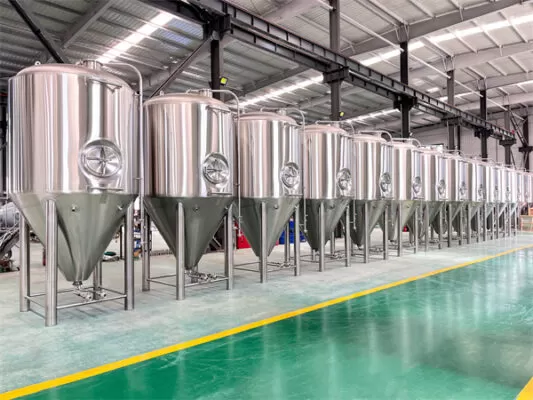
Installazione, funzionamento, manutenzione
L'installazione meticolosa, la facilità d'uso, la manutenzione preventiva e il supporto tempestivo per la risoluzione dei problemi sono vitali per l'hardware della produzione di birra industriale.
Tabella 5: Esecuzione dell'installazione e gestione continua delle apparecchiature
| Palcoscenico | Attività richieste |
|---|---|
| Installazione | Opere civili, strutturali, meccaniche, elettriche, tubazioni;<br> Movimentazione consegna attrezzature; <br>Calibrazione, corse di prova; |
| Operazione | Documentazione SOP;<br> Programmi di ispezione; <br>Acqua, energia, beni di consumo |
| Manutenzione | Piani di manutenzione preventiva; <br>Monitoraggio delle apparecchiature; <br> Pianificazione della risposta in caso di guasto |
| Gestione | Programmi di allenamento; <br>Inventario dei pezzi di ricambio; <br>Feedback dei fornitori |
I produttori di birra dovrebbero verificare la preparazione alla costruzione prima che le attrezzature raggiungano il sito. La formazione del personale per le procedure operative standard e le attività di manutenzione inizia nella fase di pre-commissioning. Le infrastrutture per l’energia, l’acqua e le acque reflue dovrebbero essere pronte prima dell’avvio della produzione.
Selezione dei fornitori di attrezzature per birrifici
La scelta di partner competenti per attrezzature per la produzione di birra industriale in base a parametri quali esperienza, scala, competenza nella personalizzazione e supporto post-installazione garantisce un'esecuzione regolare del progetto.
Tabella 6: Criteri di valutazione del fornitore per l'approvvigionamento di hardware per la produzione di birra
| Parametro | Criteri di valutazione |
|---|---|
| Traccia di registrazione | Anni di attività; Dimensione della clientela; Portafoglio del birrificio |
| Idoneità delle offerte | Allineamento cataloghi apparecchiature; Adatta al budget |
| Capacità di personalizzazione | Flessibilità progettuale; Capacità di integrazione |
| L'evasione degli ordini | Affidabilità della produzione; Controllo di qualità |
| Reattività | Tempi di consegna del preventivo; Trasparenza delle informazioni |
| Assistenza post-vendita | Supporto all'installazione; Contratti di manutenzione |
| Riferimenti | Feedback del cliente; Contatti del birrificio per feedback |
Ulteriori considerazioni per i fornitori includono la presenza locale, l'infrastruttura di riparazione, i servizi di formazione, la garanzia della fornitura di pezzi di ricambio e la fornitura di aggiornamenti. Durante la selezione sono consigliabili visite in loco agli impianti esistenti.
Pro, contro e limitazioni
Pros of Industrial Brewing Equipment
While the passion for a perfectly crafted beer might start small, scaling brewing operations demands equipment that can match ambition. This is where industrial brewing equipment steps in, offering breweries a world of advantages beyond simply increased volume. From consistent quality to operational efficiency, let’s dive into the key benefits that this equipment brings to the table.
Quality Ensured, Consistency Guaranteed: Imagine pouring the same beer twice and having vastly different experiences. Inconsistent quality can be the bane of any brewery’s reputation. Industrial equipment combats this by introducing precision and automation. Temperature control systems maintain optimal conditions for each brewing stage, minimizing human error and guaranteeing batch-to-batch consistency. Advanced filtration systems further elevate the game by ensuring clarity and removing unwanted particles, leading to a consistently smooth and satisfying final product.
Efficiency Reigns Supreme: Time is money, and industrial equipment understands this language perfectly. By automating tedious tasks like wort transfer and cleaning, it frees up valuable manpower for brewers to focus on their creative pursuits. Additionally, larger vessels allow for bigger batches, maximizing production output without compromising quality. This translates to increased profitability and the ability to meet growing demand with ease.
Scalability Made Simple: As a brewery grows, its equipment needs to grow with it. Industrial equipment is designed with modularity in mind, allowing breweries to seamlessly add new components or expand existing ones. This eliminates the need for costly equipment overhauls and ensures a smooth scaling process. Whether it’s adding a new fermenter or upgrading filtration systems, industrial equipment empowers breweries to adapt and thrive in a dynamic market.
Safety Always Comes First: Working with large volumes of hot liquids and pressurized systems demands a rigorous focus on safety. Industrial equipment incorporates robust safety features like pressure relief valves and automated shut-off mechanisms, minimizing the risk of accidents and ensuring a safe working environment for everyone involved.
Data-Driven Decisions: In today’s data-driven world, information is power. Industrial equipment often comes equipped with sophisticated monitoring systems that track temperatures, pressures, and other key metrics throughout the brewing process. This wealth of data allows brewers to gain valuable insights into their operations, identify areas for improvement, and optimize their recipes for even greater efficiency and quality control.
Sustainability in the Spotlight: As environmental awareness grows, breweries are increasingly focused on reducing their ecological footprint. Industrial equipment manufacturers are responding with innovative solutions that incorporate energy-efficient features and use sustainable materials. From heat recovery systems to water-saving cleaning protocols, these technologies allow breweries to brew their passion responsibly, minimizing their environmental impact.
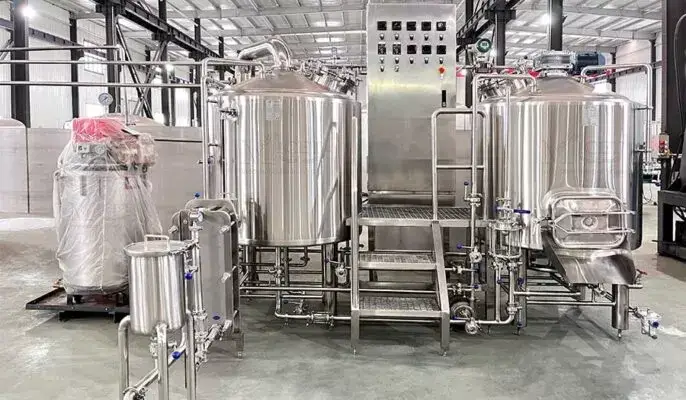
Cons of Industrial Brewing Equipment
The allure of industrial brewing equipment is undeniable. It promises efficiency, precision, and the ability to scale production to new heights. Yet, for passionate brewers, the path paved with stainless steel behemoths might not always be smooth sailing. Before taking the plunge, it’s crucial to acknowledge the potential downsides of this powerful machinery.
The Price of Precision: While consistency is a virtue, excessive control can stifle creativity. Industrial equipment, with its automated routines and standardized processes, can leave little room for experimentation. The magic touch of a hands-on brewer, adjusting temperatures by feel or adding ingredients based on intuition, becomes less relevant. This homogenization might lead to beers that are technically flawless but lack the unique soul that craft breweries are known for.
Flexibility Forfeited: While modularity allows for growth, it doesn’t translate to instantaneous adaptation. Adding a new tank or changing a recipe within an industrial setup can be a complex and time-consuming process. Smaller brew systems, on the other hand, offer the agility to quickly tinker and adjust, embracing happy accidents and spontaneous recipe tweaks that can lead to exciting new discoveries.
The High Cost of Entry: The initial investment in industrial equipment is substantial. Not only are the machines themselves expensive, but their installation and maintenance require specialized expertise and infrastructure. This high barrier to entry can be daunting for small and aspiring breweries, potentially limiting the diversity of voices and brewing styles in the market.
Sustainability Skepticism: While strides are being made towards eco-friendly solutions, industrial equipment inherently consumes more resources than smaller setups. Large-scale brewing typically uses more water, energy, and cleaning chemicals, leaving a bigger environmental footprint. For breweries committed to sustainable practices, this trade-off demands careful consideration.
The Human Touch Fades: Automation is a double-edged sword. While it frees up manpower for other tasks, it also removes the brewer from the direct interaction with the ingredients. This detachment can lead to a disconnect with the brewing process, potentially dulling the passion and connection that draws many to the craft.
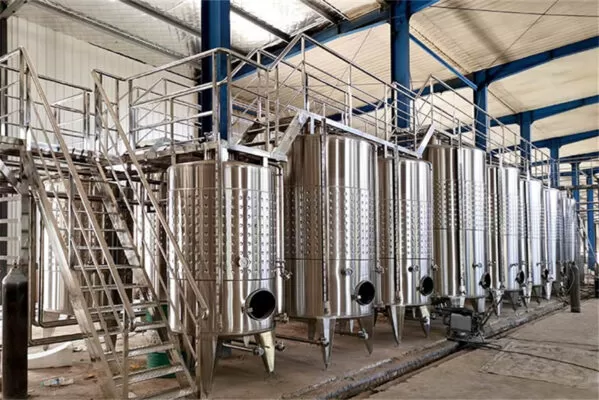
Limitations of Industrial Brewing Equipment
Industrial brewing equipment, with its imposing tanks and gleaming chrome, embodies the power of precision and scale. Yet, behind this façade of efficiency lies a world of limitations. Just as towering mountains offer breathtaking vistas but limit spontaneous exploration, these behemoths of brewing impose boundaries on the creative spirit, demanding a deeper understanding of their constraints.
Size Matters, But Not Always for the Better: While large batch sizes fuel profitability, they can also become creative handcuffs. Experimentation, the lifeblood of craft brewing, thrives on small-scale trials, allowing brewers to refine recipes and explore the subtle nuances of flavors. In contrast, large-scale brewing requires unwavering commitment to a recipe, leaving less room for spontaneous tweaks and serendipitous discoveries.
Flexibility Takes a Backseat: Unlike a sculptor with a lump of clay, brewers with industrial equipment navigate a predetermined path. Adapting recipes or incorporating last-minute ingredient changes becomes a logistical dance, requiring adjustments to temperature profiles and cleaning schedules. This rigidity can stifle the agility needed to seize fleeting opportunities and respond to dynamic market trends.
The Personal Touch Gets Lost: Stepping onto the platform of an industrial brewery, one might encounter a symphony of automated pumps and valves, but the human touch fades into the background. The intimate connection with the brewing process, the intuitive adjustments based on smell and texture, are largely replaced by data-driven decisions and pre-programmed cycles. This disconnect can impact the soul of the beer, potentially sacrificing the unique character and depth that defines craft brewing.
Standardization Breeds Similarity: From the gleaming tanks to the automated processes, industrial equipment embodies uniformity. While this consistency assures predictable outcomes, it can also lead to homogenization. The beers produced, while flawless in execution, might lack the distinctive personality and regional flair that excites craft beer enthusiasts.
Costly Upkeep, Environmental Footprint: The initial investment in industrial equipment is a hefty price tag, but the costs extend far beyond. Maintaining these complex systems demands skilled technicians and specialized cleaning protocols. Additionally, the sheer scale of operation translates to increased water and energy consumption, leaving a larger environmental footprint compared to smaller setups.
The limitations of industrial brewing equipment are not meant to dissuade, but rather to inform. Recognizing these constraints empowers brewers to make informed decisions, leveraging the strengths of these systems while seeking creative workarounds and embracing alternative approaches. Ultimately, the path to brewing excellence lies not in blindly adopting tools, but in understanding their limitations and using them to amplify, not constrain, the brewer’s artistry. Only then can the industrial giants dance in harmony with the creative human spirit, producing beers that celebrate both precision and soul.
Tabella 7: Confronto tra vantaggi chiave e limitazioni
| Parametri | Pro e vantaggi | Contro e sfide |
|---|---|---|
| Volumi | Rendimenti elevati; Economie di scala | Complessità di coordinamento; Inventario |
| Automazione | Precisione; Ripetibilità; Approfondimenti sui dati | Processi non flessibili; Costi dell'attrezzatura |
| Varietà | Capacità di produrre marchi diversi | Serbatoi aggiuntivi; Cambi |
| Qualità | Controllo avanzato del processo; Stabilità delle condizioni | Esigenze CIP rigorose |
| Orma | Compatto rispetto alla capacità | Esigenze di sviluppo del sito |
| Abilità operative | Squadre tecniche specializzate | Spese generali di formazione |
Sebbene le moderne attrezzature industriali per la produzione della birra offrano enormi vantaggi in termini di produttività ed efficienza, i produttori di birra devono valutare i vantaggi rispetto alle significative spese di capitale e operative coinvolte.
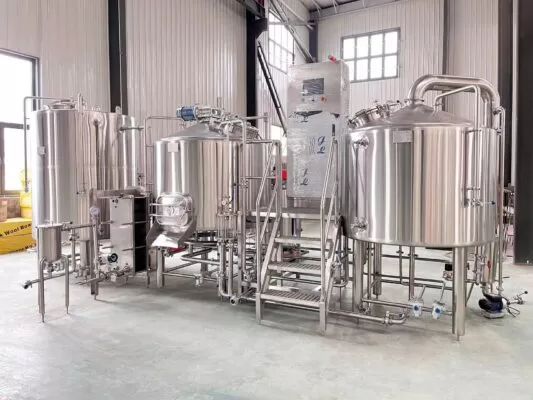
FAQ
Quali sono i costi tipici per l'installazione di un'attrezzatura per un birrificio industriale?
- I costi variano considerevolmente in base ai volumi di produzione e al grado di automazione: da circa $500.000 per un birrificio base da 10.000 hl a oltre $5 milioni per un impianto all’avanguardia da 500.000 hl.
Quali sono i requisiti di spazio per un birrificio industriale?
- Come linea guida, consentire circa 1,5-2 piedi quadrati. per barile annuo di birra prodotta solo per il birrificio. È necessaria più area per la fermentazione, la maturazione, lo stoccaggio.
Quali sono i marchi più comuni di attrezzature per la produzione della birra?
- I principali OEM di apparecchiature a livello mondiale includono Alfa Laval, GEA Group, Krones, Paul Mueller e Praj. Molti produttori di acciaio inossidabile su misura si rivolgono anche ai birrifici industriali.
Quali volumi di produzione definiscono un birrificio micro o macro industriale?
- I microbirrifici producono meno di 15.000 barili all’anno. I grandi birrifici macro producono oltre 6 milioni di barili all’anno.
Quanto tempo richiede l'installazione di un birrificio industriale?
- Le tempistiche vanno da 6 a 12 mesi in base alla scala, coprendo la preparazione del sito, i programmi di consegna e installazione delle apparecchiature, le corse di prova, la produzione di birra di prova, il lancio commerciale.
Per saperne di più Attrezzature per la produzione di birra




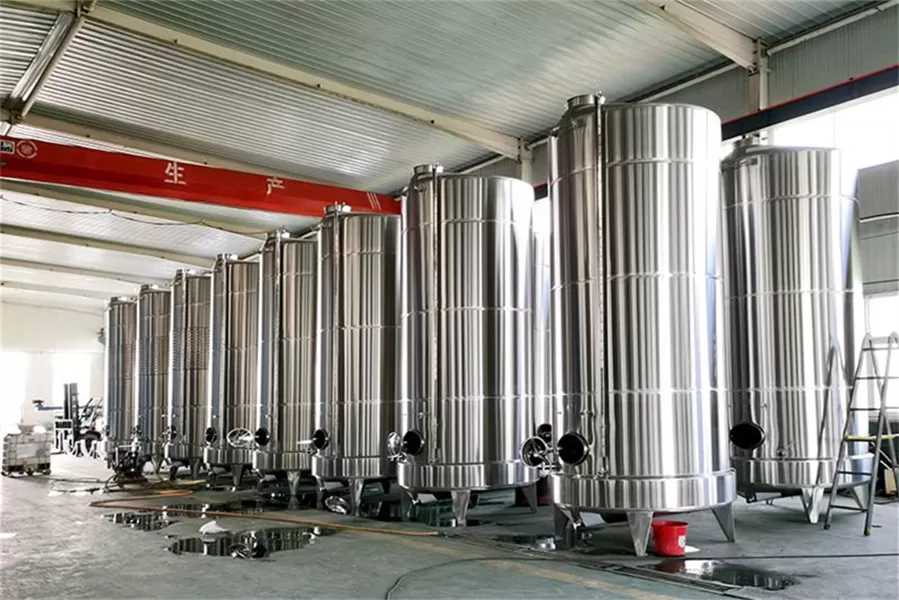
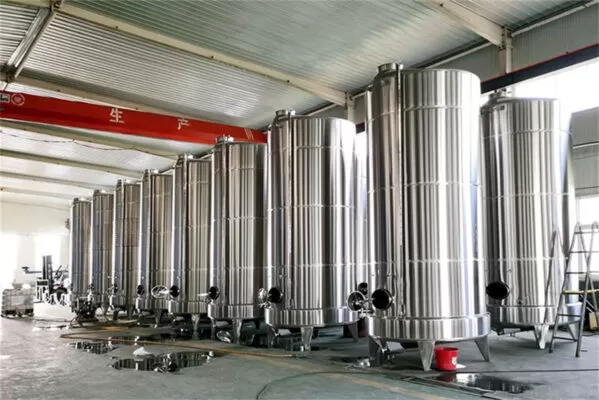
Just wish to say your article is as surprising The clearness in your post is just cool and i could assume youre an expert on this subject Fine with your permission allow me to grab your RSS feed to keep updated with forthcoming post Thanks a million and please keep up the enjoyable work